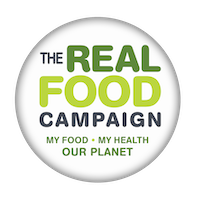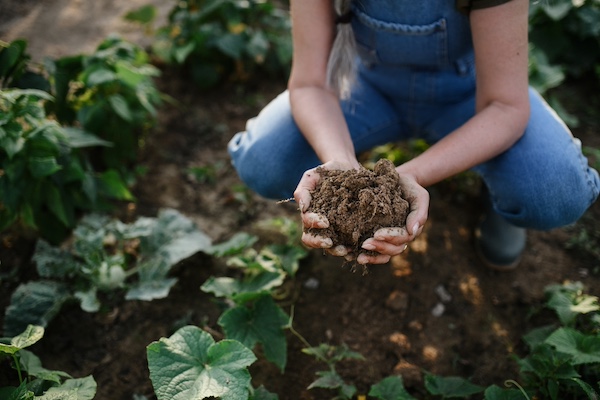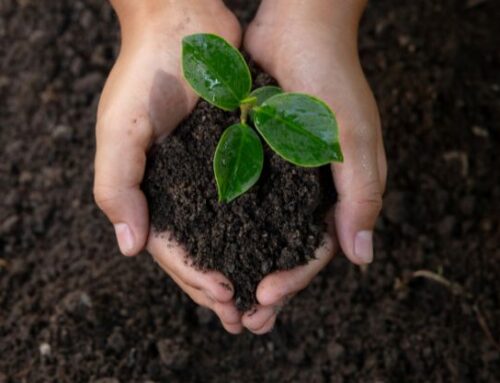We all know that the type of food we eat has an effect on our health, but how significant is the way it is grown? To optimise our nutrition, its not just what we eat, its how it was grown, which is why anyone who cares about health needs to care about agricultural practices.
Food can heal, support and nourish health yet not all food is created equal. The same crops grown under different conditions offer significant variations in nutrient levels. In addition the shift to food quantity based on yields, over food quality with nutrient density has resulted in diminished levels of nutrients. Research shows that over the past 60 years concentrations of vitamins, minerals, micronutrients and phytonutrients have, in general, steadily decreased in fresh fruits and vegetables. Minerals and trace elements have also declined in grains, meat and dairy products. ①
The nutrients in the foods we eat provide substances essential for growth and maintenance of life. These include macronutrients needed in quantity and micronutrients for which smaller amounts are essential. Notable decline in micronutrients includes iodine, iron, copper and zinc. Ongoing research clearly demonstrates a significant relationship between deficiencies in micronutrients and ill health ②. ③.
Nutritional science has determined adequate intake levels for different macro- and micronutrients. Plants also contain compounds such as carotenoids and polyphenols, known as phytochemicals or phytonutrients. Dietary intake levels have not been established for phytonutrients, though it is well recognized they have significant protective antioxidant and anti-inflammatory effects relevant to human health ④
Phytonutrients are produced by plants as part of their means of survival. The biological challenge of exposure to direct sunlight and ultraviolet rays all day, in addition to protection from viruses, bacteria and fungi, forced plants to form powerful free radical scavenging, anti-oxidant plant compounds to protect themselves. Research suggests that phytonutrient rich diets from lots of fruits and vegetables are associated with a reduced risk of many chronic diseases, including cardiovascular disease, and may be protective against certain types of cancers. ⑤ ⑥ ⑦
Food production has changed enormously during the past century. Todays agricultural systems are predominantly large scale mono cultures of limited varieties that require fertilisers, herbicides and pesticides to ensure high yield. Increasing yields invariably comes at the expense of nutrient density ⑧ (ratio of nutritional value to energy intake)
It is estimated that 95% of our food is directly or indirectly produced from our soils. Healthy soil needs a well-functioning eco system to grow nutrient rich plants. A soil rich in microbes and fungi will help boost beneficial nutrients in crops. Regenerative farming practices that constantly re-build soil health through organic matter, like biodynamic, organic and agro-ecologic, have a positive influence on crop nutrient density.
Research led by David Montgomery of the University of Washington compares the effect of regenerative and conventional farming on soil health and crop nutrient density from a cohort of paired farm trials across the United States. His comparison indicates that regenerative agricultural practices employing no-till, cover crops and diverse crop rotations are more likely to produce higher levels of phytonutrients, vitamin and minerals ⑨
Regenerative farming systems focus on growing fertile soil to ensure healthy plant life. To a large extent this depends on the levels of organic matter within the soil. Organic material from plants, animals and organisms decomposes and when this becomes resistant to any further decomposition it is known as humus. Unlike organic material humus is stable creating a fertile soil which is extremely absorptive, holding and releasing water and nutrients as needed. It also improves the structure of soil so that it is crumbly and aerated. Without stable humus plus decaying plant and animal matter the soil can not support the wide variety of organisms that enables nutrient dense food to be grown.
Given that soil life influences nutrient density it appears the adoption of the now-conventional practices, using chemical fertilisers, herbicides, pesticides and heavy tillage has inadvertently shortchanged crops on micronutrients and phytochemicals important for human health ⑩
In addition to a higher concentration of antioxidants, lower concentrations of the toxic metal cadmium and a lower incidence of pesticide residues are found in organically grown crops. ⑪ Pesticide exposure has been linked to a potentially higher risk of Parkinsons, ⑫an increased risk of Alzheimers ⑬ and a significantly higher risk of hormone related cancers ⑭
Farming systems that work in harmony with nature, are based on practices that protect and improve environmental health. They enhance the ecosystem as they consume less energy, reduce greenhouse gas emissions, absorb CO2 from the air, reduce soil erosion, improve water quality and produce greater biodiversity ⑮.Human health and the health of the environment are tightly interconnected, a healthy environment is fundamental to our wellbeing it affects the food we eat, the water we drink and the air that we breathe.
Produce from organic and biodynamic farming systems is usually more expensive and tight budgets mean many people can simply not afford these foods. Despite food from natural systems being better for your health, fruits, vegetables, and whole grains are still among the healthiest foods and not being organic should not be a deterrent from eating as wide a variety of these foods as possible. Many small family run local farms whilst not organic minimise the use of chemicals.
There are a number of solutions to the critical issue of affordability.
eat seasonal
Fruit & vegetables are cheaper when in season. It’s fresher, healthier – better for you and the planet.
grow your own
From balcony to garden, windowsill to allotment, growing vegetables is a fantastic way to save money,
learn to preserve
Preserving food is a good way to stretch your budget, help the environment and live a healthier life all at the same time.
forage
Foraged nettles, wild garlic, mushrooms, mallow, ground elder, blackberries, nuts and rosehips all aid your wellbeing, and boost the health of body and mind.
join a box scheme
Fresh produce delivered to your door
support food campaigning organisations
Organisations like the Sustainable Food Trust, Soil Association, Friends of the Earth & Sustain campaign for an urgent change to the UK’s approach to food with a focus on natural farming to ensure a healthy equitable food future for everyone.
Over the last decade the idea that we are passive food consumers has been rightly challenged and the era of food citizenship has emerged. Food citizens are positive participants in shaping a food system that benefits us all. A system that encourages more ecological, biodiverse, sustainable and socially just forms of producing food so that we can truly say ‘food is medicine’.
1Thomas D. The mineral depletion of foods available to us as a nation (1940-2002)–a review of the 6th Edition of McCance and Widdowson. Nutr Health. 2007;19(1-2):21-55. doi: 10.1177/026010600701900205. PMID: 18309763.
2 Muscaritoli M. The Impact of Nutrients on Mental Health and Well-Being: Insights From the Literature. Front Nutr. 2021 Mar 8;8:656290. doi: 10.3389/fnut.2021.656290. PMID: 33763446; PMCID: PMC7982519.
3.Anne-Marie Berenice Mayer, Liz Trenchard & Francis Rayns (2022) Historical changes in the mineral content of fruit and vegetables in the UK from 1940 to 2019: a concern for human nutrition and agriculture, International Journal of Food Sciences and Nutrition,73:3, 315- 326, DOI: 10.1080/09637486.2021.1981831
4 Krzyzanowska, J., Czubacka, A., and Oleszek, W. (2010). “Dietary phytochemicals and human health,” in Bio-Farms for Nutraceuticals, eds M. T. Giardi, G. Rea, and B. Berra
5.Plaskett LG, 1999, ‘Nutritional therapy to the aid of cancer patients’, International Journal of Alternative and Complementary Medicine, Dec 1999
6 Dietary (poly)phenolics in human health: structures, bioavailability, and evidence of protective effects against chronic diseases Daniele Del Rio
7 Antioxidant relevance to human health Mark L Wahlqvist
8 Drewnowski, A. (2009). Defining nutrient density: development and validation of the nutrient rich foods index. J. Am. Coll. Nutr. 28, 421S−426S. doi: 10.1080/07315724.2009.10718106
9 Montgomery DR, Biklé A, Archuleta R, Brown P, Jordan J. 2022. Soil health and nutrient density: preliminary comparison of regenerative and conventional farming. PeerJ 10:e12848
10 Montgomery, D. R., and Biklé, A. (2016). The Hidden Half of Nature: The Microbial Roots of Life and Health. New York, NY: W.W. Norton.
11 Barański, M., Średnicka-Tober, D., Volakakis, N., Seal, C., Sanderson, R., Stewart, G., . . . Leifert, C. (2014). Higher antioxidant and lower cadmium concentrations and lower incidence of pesticide residues in organically grown crops: A systematic literature review and meta-analyses. British Journal of Nutrition,112(5), 794-811. doi:10.1017/S0007114514001366
12 Ahmed H, Abushouk AI, Gabr M, Negida A, Abdel-Daim MM. Parkinson’s disease and pesticides: A meta-analysis of disease connection and genetic alterations. Biomed Pharmacother. 2017 Jun;90:638-649. doi: 10.1016/j.biopha.2017.03.100. Epub 2017 Apr 14. PMID: 28412655.
13 Yan D, Zhang Y, Liu L, Yan H. Pesticide exposure and risk of Alzheimer’s disease: a systematic review and meta-analysis. Sci Rep. 2016 Sep 1;6:32222. doi: 10.1038/srep32222. PMID: 27581992; PMCID: PMC5007474.
14 Lerro CC, Koutros S, Andreotti G, Friesen MC, Alavanja MC, Blair A, Hoppin JA, Sandler DP, Lubin JH, Ma X, Zhang Y, Beane Freeman LE. Organophosphate insecticide use and cancer incidence among spouses of pesticide applicators in the Agricultural Health Study. Occup Environ Med. 2015 Oct;72(10):736- 44. doi: 10.1136/oemed-2014-102798. Epub 2015 Jul 6. PMID: 26150671; PMCID: PMC4909328.
ARTICLE BY: Daphne Lambert
Bio: Daphne has been a chef for over 40 years, an eco-nutritionist for more than 25 years and for most of her adult life an organic gardener and environmentalist. She is the founder of Greencuisine Trust, a charity focused on just social and ecological food cultures.
This article was originally published in Greencuisine Trust.



Leave A Comment